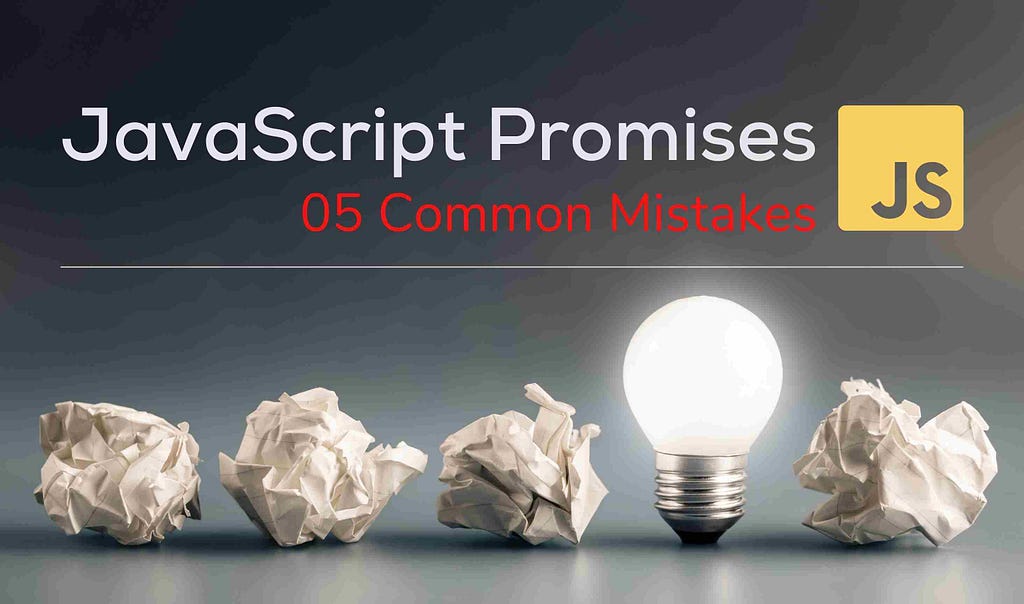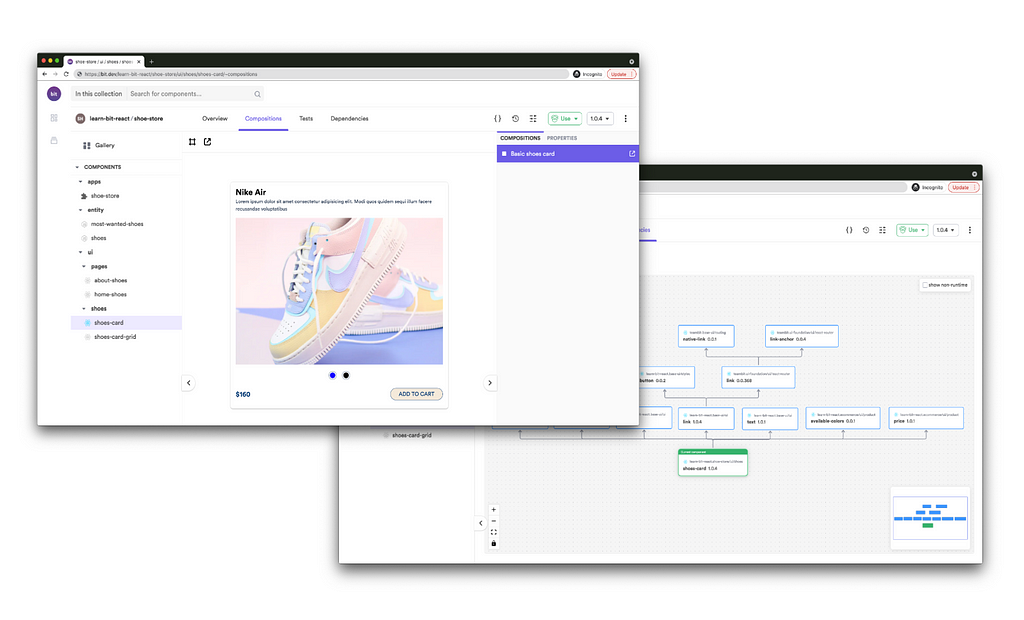This content originally appeared on Bits and Pieces - Medium and was authored by Ravidu Perera
Use Promises effectively by avoiding these common mistakes

Promises provide an elegant way to handle asynchronous operations in JavaScript. Once, it was the breakthrough solution to avoid callback hell. However, not many developers understand what’s going inside them. As a result, many tend to make mistakes in using Promises in practice.
In this article, I will discuss five common mistakes using Promises in JavaScript so that you can avoid them in the first place.
1. Avoid Promise Hell
Usually, Promises are used to avoid callback hell. But misusing them can cause Promise Hell.
In the above example, we have nested three Promises to userLogin, getArticle, and showArticle. As you can see, the complexity will grow proportionally to the lines of code and, it could become unreadable.
To avoid this we need to un-nest our code by returning getArticle from the first then and handle it in the second then .
2. Using try/catch block inside the Promise Definition
Usually, we use the try/catch block for error handling. However, using the try/catch block within the Promise object is not recommended.
That’s because if there are any errors, the Promise object will automatically handle them in the catch scope.
In the above example, we have used the try/catch block within the Promise scope.
But, Promise itself catches all errors (even typos) within its scope without the try/catch block. It ensures that all exceptions thrown during the execution are acquired and converted to a rejected Promise.
Note: It is crucial to use the .catch() block in the Promise block. Else, your test cases can fail and also the application might crash during the production phase.
This will always work except for the next mistake I’m going to discuss.
3. Using the Asynchronous function inside the Promise block
Async/Await is a more advanced syntax for dealing with multiple Promises in synchronous code. When we use the async keyword before a function declaration, it returns a Promise, and we can use the await keyword to stop the code until the Promise we’re waiting for resolves or rejects.
But there are some side effects of an Async function when you put it inside a Promise block.
Let’s imagine you want to do an async operation in your Promise block, and you add the async keyword, and your code throws an error.
Even if you use a catch() block or wait for your Promise inside a try/catch block, you won’t be able to handle this error immediately. Check the following example:
When I encounter async functions inside a Promise block, I attempt to keep the async logic outside the Promise block to keep it synchronous. And it works 9 out of 10 times.
However, in some instances, an async function may be required. In that situation, you’ll have no choice but to manage it with a try/catch block manually.
4. Executing a Promise block immediately after creating the Promise
As for the below code snippet, if we place the code snippet to invoke an HTTP request, it gets executed immediately.
The reason is that the code snippet is wrapped in a Promise constructor. However, some of you might it’s only triggered after a then method when myPromise gets executed.
That, however, is not the case. Instead, when a Promise is created, the callback is immediately executed.
It means that by the time you get to the following line after establishing myPromise, your HTTP request is most likely already running, or at the very least scheduled state.
Promises are always eager to the execution process.
What should you do, though, if you desire to carry out the Promise later? What if you don’t want to make that HTTP request right now? Is there any magical mechanism built into the Promises that would allow you to do that?
The answer is often more apparent than what developers expect. Functions are a time-consuming mechanism. Only when the developer expressly invokes them with the (), they executed. Simply defining a function isn’t going to get you anywhere just yet. So, the most effective approach to make a Promise lazy is to wrap it in a function!
Promise constructor inside a function and nothing got called yet in our model. So we change the variable name since it is no longer a Promise but creates and returns a Promise object.
With an HTTP request, the Promise constructor and the callback function will only be called when the function is executed. So now we have a lazy Promise that is only performed when we need it.
5. Not using Promise.all() method necessarily
If you’re a professional developer, you already know what I’m talking about. If you have numerous Promises that are unrelated to one another, you can resolve them all simultaneously.
The Promises are concurrent, but it will take too long if you wait for them one at a time. You’ll save much time by using Promise.all().
Remember, Promise.all() is your friend!!!
The above code will take around 6 seconds to execute. but if we replace this with Promise.all() it will reduce the execution time.
Build with independent components, for speed and scale
Instead of building monolithic apps, build independent components first and compose them into features and applications. It makes development faster and helps teams build more consistent and scalable applications.
Bit offers a great developer experience for building independent components and composing applications. Many teams start by building their Design Systems or Micro Frontends, through independent components.
Give it a try →

Conclusion
In this article, I discussed haves the five common mistakes developers make when using Promises in JavaScript. However, there can be many more simple issues that need to be addressed carefully.
If you are familiar with more mistakes that can happen with Promises, mention them in the comments.
Happy coding.
Learn More
- ULID vs UUID: Sortable Random ID Generators for JavaScript
- What is Chrome Scripting API?
- JavaScript Sanitizer API: The Modern Way to Safe DOM Manipulation
5 Common Mistakes in Using Promises was originally published in Bits and Pieces on Medium, where people are continuing the conversation by highlighting and responding to this story.
This content originally appeared on Bits and Pieces - Medium and was authored by Ravidu Perera
Ravidu Perera | Sciencx (2021-11-15T18:22:29+00:00) 5 Common Mistakes in Using Promises. Retrieved from https://www.scien.cx/2021/11/15/5-common-mistakes-in-using-promises/
Please log in to upload a file.
There are no updates yet.
Click the Upload button above to add an update.
